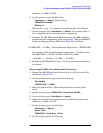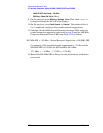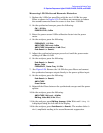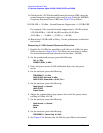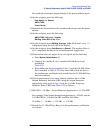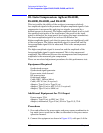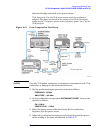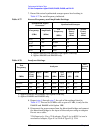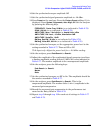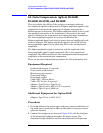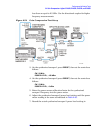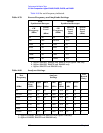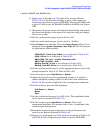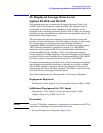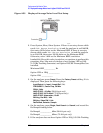
Chapter 2 293
Performance Verification Tests
33. Gain Compression: Agilent E4401B, E4402B, E4403B, and E4411B
10.Set the synthesized sweeper amplitude Off.
11.Set the synthesized signal generator amplitude to
−24 dBm.
12.Press
Preset on the analyzer. Press the Factory Preset softkey, if it is
displayed. Press
System, Alignments, Auto Align, Off. Set the analyzer
by pressing the following keys:
FREQUENCY, Center Freq, 50 MHz (or as indicated in Table 2-78)
SPAN, 150 kHz (or as indicated in Table 2-78)
AMPLITUDE, More, Y Axis Units (or Amptd Units), dBm
AMPLITUDE
, Ref Level, –10 dBm, Attenuation 0 dB
AMPLITUDE
, Scale/Div, 10 dB
BW/Avg
, Res BW, 30 kHz (or as indicated in Table 2-78)
BW/Avg, Video BW, 300 Hz (or as indicated in Table 2-78)
13.On the synthesized sweeper, set the appropriate power level to the
setting recorded in Table 2-77. Then set RF to Off.
75
Ω Input only: Adjust the power level for a −2.0 dBm reading.
14.On the analyzer, press
Peak Search (or Search).
15.Adjust the amplitude of the synthesized signal generator to achieve
a marker amplitude reading within 0.5 dB of the value indicated in
Table 2-77. The marker amplitude is the uncompressed amplitude.
16.On the analyzer, press the following keys:
Peak Search (or Search)
Marker
Delta
17.On the synthesized sweeper, set RF to On. The amplitude should be
the same as recorded in Table 2-77.
18.On the analyzer, press
Peak Search (or Search). This is the
compressed amplitude. The marker delta (
∆ Mkr1) amplitude is the
measured gain compression.
19.Record the measured gain compression in the performance test
record as the Entry listed in Table 2-78.
20.Repeat step 6 through step 19 for each set of settings in Table 2-77
and Table 2-78.



